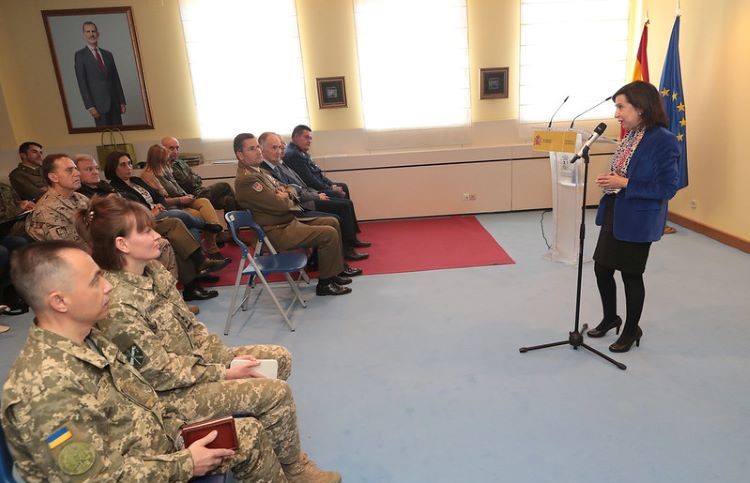The Diplomat
Monday to receive basic training at the facilities of the Toledo Academy. These soldiers will join the 21 soldiers who are currently being trained in a maneuvering field in Almeria in the handling of the 105/14 howitzer and the 19 who recently completed their training in the Aspide anti-aircraft system at the Zaragoza Air Base.
This was indicated yesterday during an informative meeting at the headquarters of the Ministry of Defense on the training of Ukrainian military personnel in Spain, in which the Minister of Defense, Margarita Robles, participated, accompanied by the Chief of Staff of the Army, Army General Amador Enseñat. The training operation of Ukrainian military personnel in Spain is part of the European Union Military Assistance Mission (EUMAM Ukraine). The first efforts have fallen on the Army, but the Navy, the Air and Space Army or the Joint Cyberspace Command will also be available for the continuation of the mission.
“Spain, since February 24, has not stopped for a minute to help Ukraine,” Robles declared during the event. Since then, the Spanish Armed Forces are “working tirelessly, an enormous amount of hours” because “by defending Ukraine, we defend peace”, added the minister, who reiterated her thanks to the Spanish Armed Forces for all the humanitarian aid and defensive material they have provided (a total of 50 logistical and humanitarian transport operations) and for the training program for the Ukrainian military.
For her part, Colonel Yulia Tapaciok, head of Bilateral Relations for the European Region of the Ukrainian Joint Chiefs of Staff and leader of the Ukrainian advanced detachment sent to Spain to coordinate the training of the Ukrainian military by the Spanish Armed Forces, emphasized that “Spain, the country in Europe with the most sunny days, has been the first European country to provide Ukraine with winter uniforms” (a total of 77,000 uniforms were delivered in September).
Robles and Tapaciok held a first meeting last Friday to coordinate training. The operation will continue in November under the coordination of the Toledo Training Command (TCC), where about 400 Ukrainian military personnel, with rotations every two months, will be trained in basic training, explosive ordnance disposal, counter improvised explosive devices, precision marksmanship and paramedical training. Courses on cyber defense and use of the 105/14 field artillery system and another basic course on the Hawk anti-aircraft system, recently donated to Ukraine, are also planned.
Precisely, the colonel of the Army Pablo Paniagua, head of the Preparation section of the Operations Division of the Army General Staff (EME), explained yesterday during the briefing that, at present, a group of 21 Ukrainian soldiers is being trained in a maneuvers field in Almeria in the handling of the 105/14 howitzer, in a course that will last eight days, and that next Monday will begin a five-week course to provide basic training to 64 Ukrainian soldiers in the facilities of the Toledo Academy. In this course, the Ukrainian soldiers, who will be accompanied by three interpreters, will be instructed in the treatment of casualties in combat, precision shooting, the fight against improvised explosive devices (IEDs) and demining, among other subjects.
Land, Navy, Air and Cyberspace
This is not the first mission of Ukrainian military personnel on Spanish soil, as 19 of them have recently been trained in the use of the Aspide anti-aircraft system by personnel of the Air Deployment Support Squadron (EADA) at the Zaragoza Air Base. Robles herself visited these Ukrainian military personnel in the Aragonese capital a month ago.
At the same event, Lieutenant General Francisco Braco, commander of the Operations Command (MOPS), reported on the more technical aspects of military assistance and training, which will evolve and adapt to the needs of the Ukrainian Army. “The novelty of this training mission is that it will take place in Spain,” said Braco, referring to the training missions carried out by the Spanish military in countries such as Mali, Central African Republic and Somalia. In this new training mission, he explained, the “first and great effort has been assumed by the Army, but the Navy, the Air and Space Army and the Joint Cyberspace Command, among others, will also be available”.






